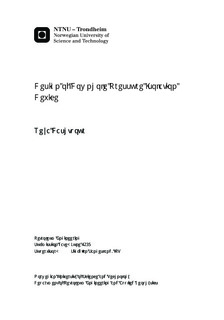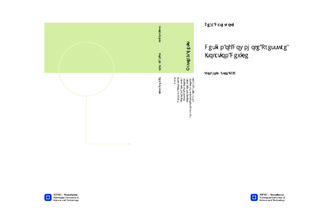| dc.description.abstract | In the petroleum industry, growing number of projects that involve harsh downhole conditions in one hand and increasing restrictions and safety requirements in other hand, have been the key driving factors for improving downhole tools. In this context pressure isolation tools, due to their profound impact on safety and efficiency of broad range of downhole operations, have been given special attention in the recent years. Many research and developments have been carried out to improve performance of these devices. While some of these activities are focused on refining existing technologies, others consist of radically new approaches. In this master thesis existing technologies related to downhole pressure isolation devices are initially investigated and heir advantages and shortcomings are identified. Furthermore; with the aim of identifying potentials for developing a new design, number of most relevant patents and technologies are explored. Finally a novel design based on existing technologies and recent patents is developed and presented. From investigation of plug operational failure rates from 1999 to 2012 it is observed that while number of plug runs has more than doubled, the failure rate has dropped from 30% in 1999 to approximately 12% in 2012. Developments in plug design and improvements in deployment methods over the years have played a significant part in this reduction. At present state, wellbore debris is acknowledged to be a major concern. According to the Statoil evaluation 72% of plug failures are either directly or indirectly triggered by debris in well. Another source of limitations and failures, especially in high pressure high temperature wells, is identified to be associated with elastomer sealing elements. To mitigate the problems associated with current technology, a new design based on metal to metal seals in combination with semisolid metal processing technology and expanding characteristic of Bismuth is developed and presented in the final stage of this thesis. Metal to metal seals have number of advantages over the traditional elastomer seals. However, because of the limitations caused by their design, establishing a satisfactory metal to metal seal at required microscopic level to provide a gas thigh seal is found to be challenging. To take advantage of metal to metal seal to overcome the limitations faced by traditional sealing technology and at the same time guarantee formation of metallic gas tight seal at microscopic level, a secondary sealing element is considered in the suggested design. In addition to the main design two alternative modifications are also included. Inclusion of the alternative designs is intended to broaden the application of the suggested plug. This is achieved by initially investigating the stress distribution at the seal?s contact surfaces with tubing as the result of its geometry and subsequently providing an alternative geometry profile that could improve the plug performance in certain downhole conditions. In another alternative method expansion of Bismuth upon solidification was used for a creating self-energizing seal.Finally to improve the possible applications of the suggested design several future work are recommended. Followings are the most important ones among these recommendations: ? A research study to identify a most suitable material that has expanding characteristics and is suitable for wide range of downhole conditions. ? A research study for identifying a modification of the suggested design to suit multiset applications. | nb_NO |

